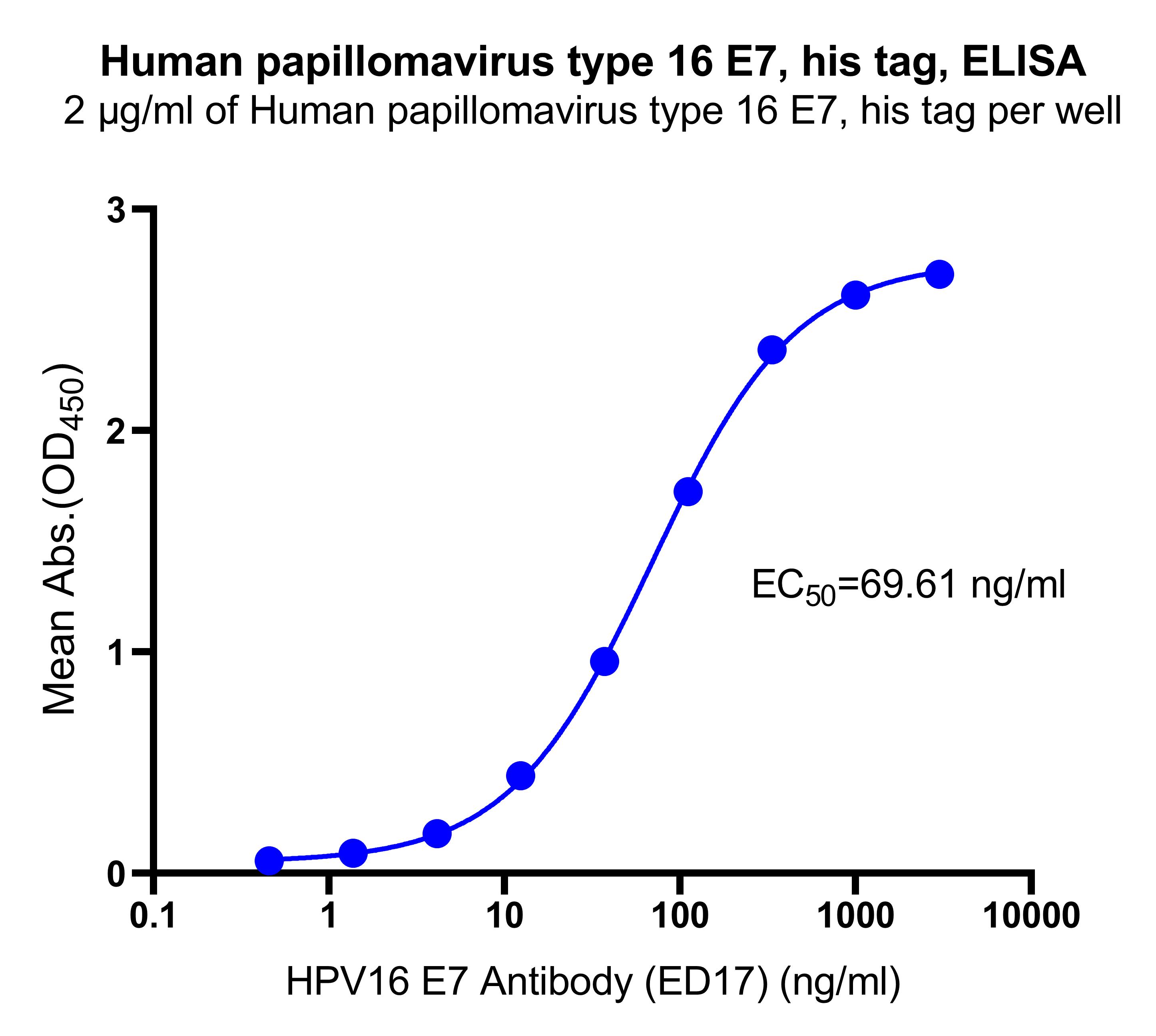Protein sequence (P03129, Met1-Pro98, with C-10*His) MHGDTPTLHEYMLDLQPETTDLYCYEQLNDSSEEEDEIDGPAGQAEPDRAHYNIVTFCCKCDSTLRLCVQSTHVDIRTLEDLLMGTLGIVCPICSQKPGGGGSHHHHHHHHHH
12 months from date of receipt, -20 to -70 °C as supplied. 6 months, -20 to -70 °C under sterile conditions after reconstitution. 1 week, 2 to 8 °C under sterile conditions after reconstitution. Please avoid repeated freeze-thaw cycles.
Human papilloma viruses (HPVs) can be classified as either high-risk or low-risk according to their association with cancer. HPV16 and HPV18 are the most common of the high-risk group while HPV6 and HPV11 are among the low-risk types. Approximately 90% of cervical cancers contain HPV DNA of the high-risk types. Mutational analysis have shown that the E6 and E7 genes of the high-risk HPVs are necessary and sufficient for HPV transforming function. The specific interactions of the E6 and E7 proteins with p53 and pRB, respectively, correlate with HPV high and low risk classifications. The high-risk HPV E7 proteins bind to pRB with a higher affinity than do the low-risk HPV proteins, and only the high-risk HPV E6 proteins form detectable complexes with p53 in vitro.

Immobilized Human papillomavirus type 16 E7, his tag at 2 μg/mL (50 μL/well) can bind HPV16 E7 Antibody with EC50 of 65.07-74.53 ng/ml.
2μg(R: reducing conditions)